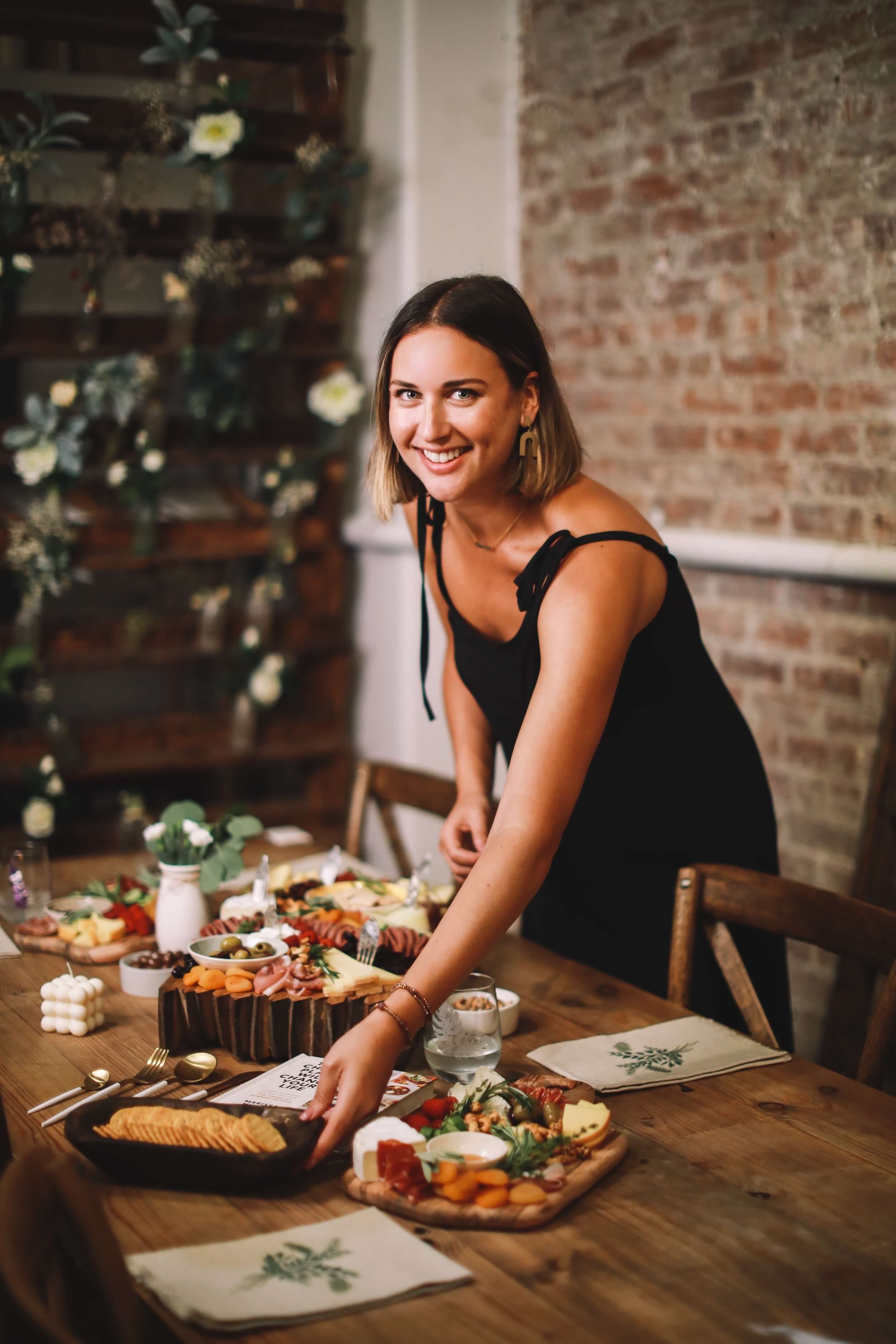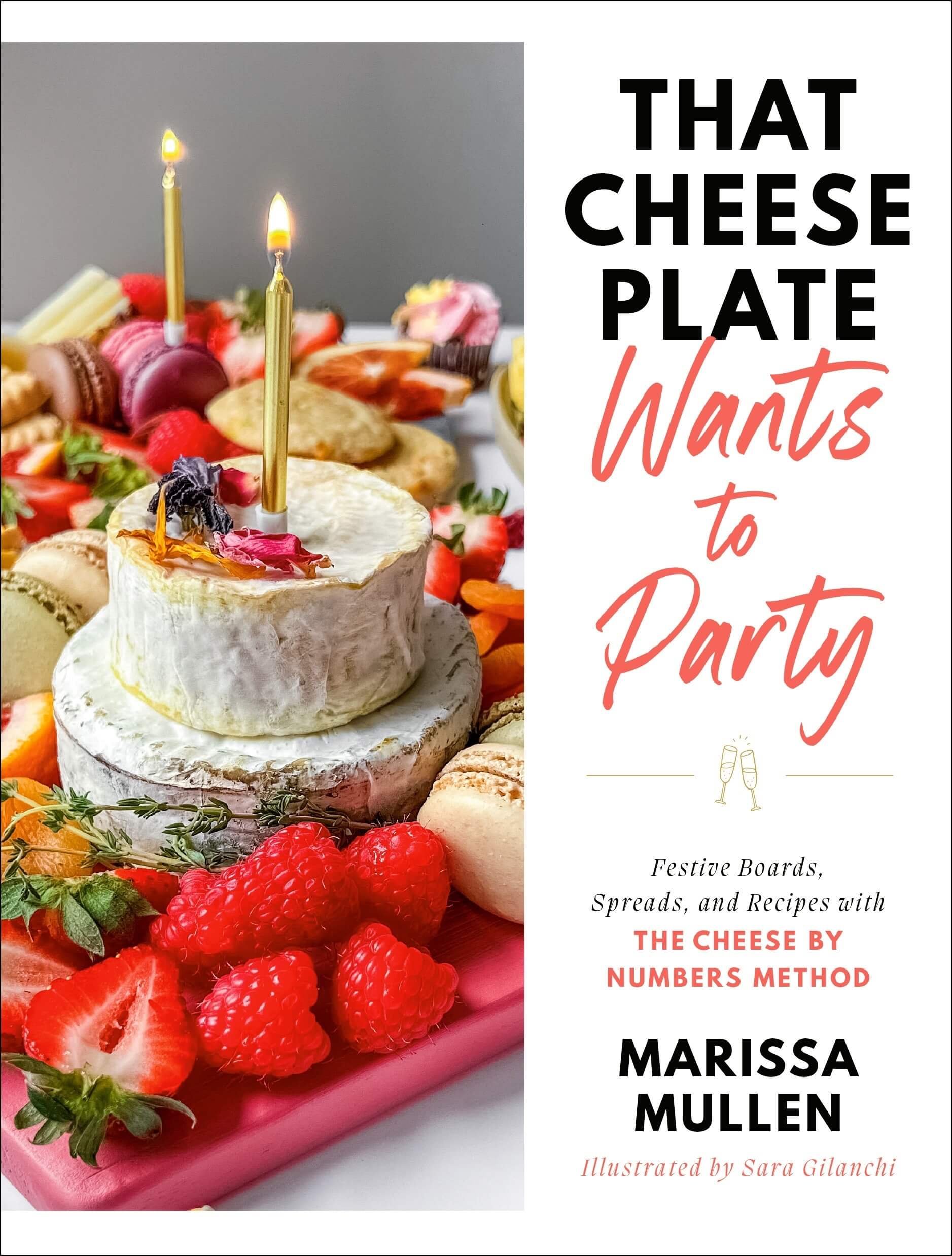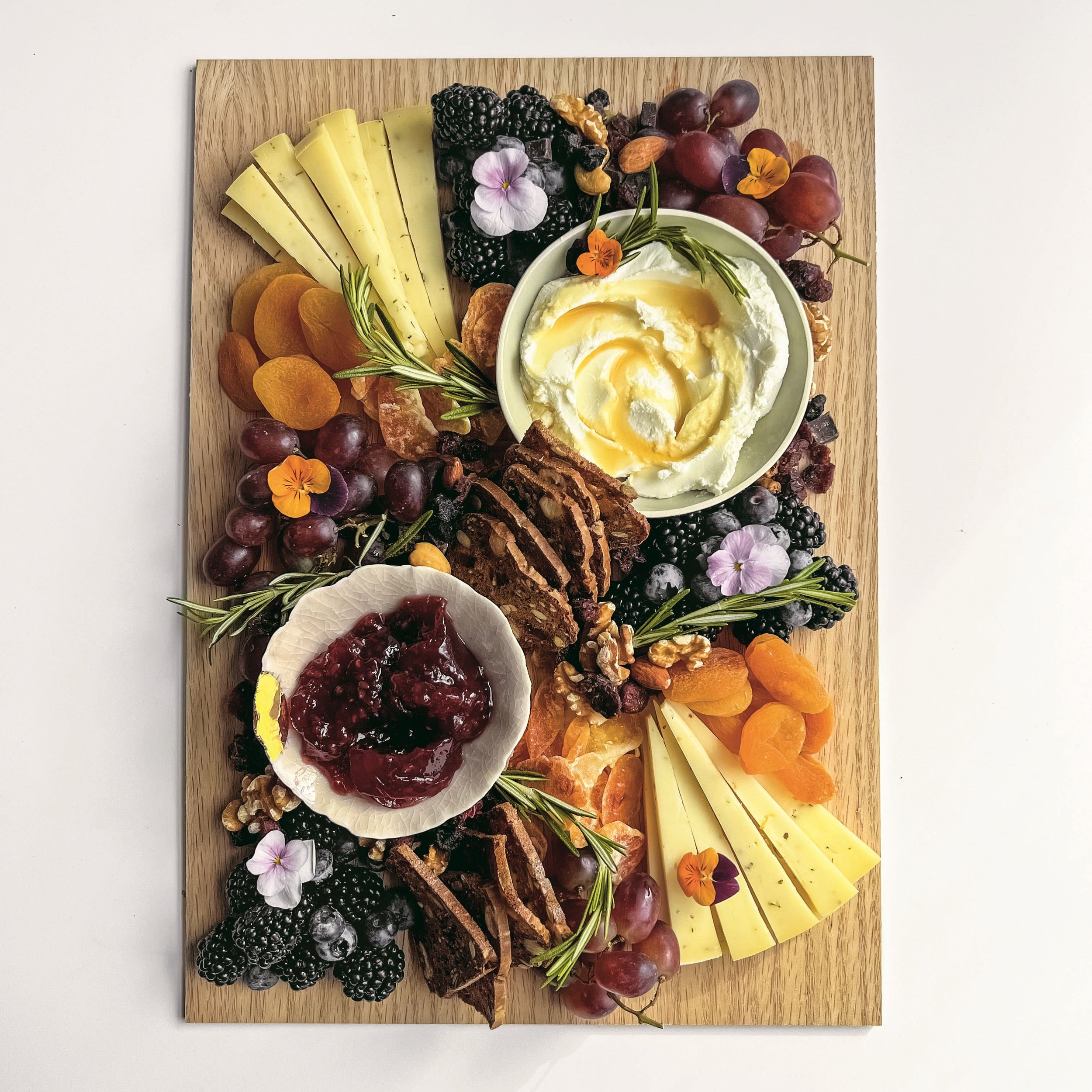How Marissa Mullen is Celebrating with “That Cheese Plate Wants to Party”
Editor’s note: We first learned about Marissa Mullen when contributor Pamela Vachon shared a story on her thematic ways to build cheese plates. Now they are both back, to talk cheese plates, cheese and the return of socializing.
I first met Marissa Mullen in the fall of 2019, after her Instagram account had blown up due to an appearance on the “Rachael Ray Show,” but before the release of her first book, That Cheese Plate Can Change Your Life. She led a group of journalists in a cheese plate design workshop based on her “Cheese by Numbers” method, and I have to say, before I even slinked that first salami river from one side of the slate to the other, I was hooked. This wasn’t the very beginning of my personal journey to becoming a cheese person — what’s the term for less than “expert” but where I have enough authority to teach and write about it? — but it wouldn’t be overstating it to say that Mullen and her method were definitely involved. And I’m not the only one. Given the success of her first book, and the ongoing popularity of “That Cheese Plate” on Instagram — now with over 350,000 followers — it’s safe to say that Mullen is at least partly responsible for raising the profile of cheeses and cheese plates among the general public over the past several years.
That Cheese Plate Wants to Party
In her latest stunner of a book, That Cheese Plate Wants to Party, cheese gets even more social. “I always loved the element of what I call a cheese party,” says Mullen, whose college parties surrounding cheese plates became the impetus for both her Instagram account and her first book. Having launched That Cheese Plate Will Change Your Life smack in the middle of the pandemic, the social theme of the second book is all the more personal. “I started writing That Cheese Plate Wants to Party in 2021,” says Mullen, “so the pandemic was still kind of happening, but knowing that it would come out in 2023, I was just hoping and praying that at that point we could be in person again.”
I believe it’s safe to say that we’ve now arrived at a moment where we, along with cheese plates, have been restored the right to party. I had the recent occasion to speak with Mullen about “That Cheese Plate Wants to Party,” especially how cheese is such a worthy centerpiece for a celebratory mindset, for celebrations both big and small.
Why did you focus on the social aspect of cheese plates in this book?
That Cheese Plate Can Change Your Life came out in the middle of COVID, in May 2020, which was the peak of the pandemic. So I was really feeling, like everyone, pretty isolated, when nobody was able to gather or have parties. With the cheese parties that I’d have with friends in college, we would sit around the kitchen table and the cheese plate was the center, and with the conversations that would take place, it was almost like the cheese plate was the gateway for deeper meaning. When you're sitting around eating a cheese plate, you're not using your phone, you're very present, and that's a huge thing that's super important to me in this day and age where we're just inundated by screens. So the theme of the new book is basically that parties aren't just a physical act, they're a mindset, so if you're in the mood to celebrate life, anything can be a party — surrounding the cheese plate, of course.
That being said, there are cheese plates for one or two, because a party doesn't have to be this big elaborate bash, and that's something that also I think that we've learned in COVID. You can have a party even if it's just by yourself on the couch if you're in the mindset, or it can be a big grazing table for a wedding. There's a wide variety in the book to just show different ways to celebrate using cheese.
I also really wanted to kind of tie in the sensory element of cheese plates: taste, smell, touch, feel, and hear. By connecting these plates to past experiences I've had, it encourages people to pay attention to what's on the plate and pay attention to the cheeses and actually taste the cheeses and pairings, and not just make a plate to take a photo and post on Instagram.
Do you feel, given the growing popularity of cheese plates, which you are at least partly responsible for, people are becoming more interested in the cheeses themselves in addition to the design?
Definitely! That's something that I really want to try to nail in, as this next phase with the new book happens. For the first book, I wrote it right as I left working in the music industry, and my knowledge of cheese in the past three years has exponentially grown. There's so much history, and there's so much to learn about flavor profiles of different cheeses and how they interact with different pairings on the plate.
I think when cheese plates and charcuterie had this big TikTok and Instagram surge, people lost that a little, and they were making boards with, you know, candy canes on them, and all these pairings that weren't making sense. So a big theme in the new book is something that I call a “bite builder.” For each cheese plate, there are four different pairings that are recommended for the plate, and every item on the plate is intentional. There is a beautiful aspect to the aesthetics of it, but also everything that you're going to pair ties in with the flavor profiles of the cheese. I also recommend cheese options. So, I'll initially keep it simple and say brie, or cheddar, but then I'll also offer my favorite types of brie and Cheddar, and I’ve listed a lot of American-made cheeses like Moses Sleeper from Jasper Hill, Melinda Mae from Mystic Cheese Company, or Holey Cow from Central Coast Creamery. So I kind of shouted out all these artisanal, U.S. brands that I love, to encourage people to go to their store or their cheesemonger and be like, “hey, I saw this cheese in this book.”
I think a lot of the time people (who are new to cheese) don't realize that high quality cheese tastes so much better. If you haven't tried Cabot Clothbound, but you've only had Cabot from the grocery store, the difference is insane, but you wouldn't know unless you try it. So I think it's important to bring people in, but not in an intimidating way. You can elevate this a little bit and it doesn't have to be that much more expensive.
What are some of the themes you devised for this book?
The first chapter is called mood boards, and all of these plates are kind of telling a story or setting a vibe or a mood. So for example, there's “That Warm Tones Plate,” and that reminds me of a sunset happy hour. A big thing in the book is that each plate has a color palette associated with it, and that palette tells you how to set your tablescape. I think that it's so much easier to think of a theme based on the plate versus thinking of a theme first, because the food — (in this case, the cheese) — is the center of every gathering. So for “That Warm Tones Plate,” you can do a matching floral arrangement that has oranges, reds, and yellows that tie into the plate itself. Then there's “That Cool Tones Plate,” which is the polar opposite — it's all blues and purples and cooler tones. There's “That First Sip of Coffee Plate,” which is all just really breakfast focused items, and it reminds me of the first sip of coffee and the smell of coffee brewing. Mood boards are very sensory experience-based.
And then we go into “Celebrate Small” so that's all plates that are for one to two people. Chapter 3 is “Garden Parties,” and those are all vegetarian because I wanted to really focus on the cheese. Sometimes I think that if every cheese plate has salami on it, you kind of lose the sense of the cheese itself, so that chapter was really fun for me to experiment with a lot of vegetarian options that aren't just raw cucumbers. For example, “That Summer in the Mountains Plate” is inspired by my best friend from college. Her family has a ranch in Montana and I would go out there every summer and her mom would set up these beautiful picnics in a field. It’s one of my favorite memories of summer, so I wanted to make a plate that evoked that. The colors on the plate, the edible flowers, and the flavors of the herbaceous goat cheese and sweet fruits all remind me of breathing in that sweet Montana air. One of my favorite parts of the book is that every cheese plate has a playlist associated with it, and this one has all folksy, country music that goes along with it. So while you're making or serving the plate, the playlist can also maybe transport you to a memory of being in the mountains somewhere.
And then you have your typical themed plates, like Halloween, Hanukkah, or Christmas. Then the last chapter is grazing tables. So it goes from setting a mood, to small, to vegetarian, to theme, to big, so there's a lot of different types of coverage or style.
One of the things that was really interesting about your first book was that you took all those pictures on your iPhone, giving it a relatable feel, so is that the same this time around?
Same thing! There are a few artsy behind-the-scenes photos, and those are taken with an actual camera, but all of the cheese plate photos are taken with my iPhone, on my kitchen table, in my Brooklyn apartment — except for those that were on location. With The Dial Press, which is my imprint (at Random House,) I'm the only cookbook. They do a lot of inspirational female stories: memoirs, fiction novels, and then me being the cheese girl. Since they don’t really do cookbooks, they didn't have any requirements in place for the format, in terms of shooting in a studio with a food stylist, etc. Using my iPhone I was able to make a lot of these plates in the location of where they were intended to be enjoyed, so “That By The Fire Plate” was made in upstate New York with my friends. I made the plate, we took the photos, and then we literally ate it by the fire. Tying into the party element, these plates weren't taken in a sterile studio; I based the cheese plates around my life in a way. So now when I go back into the book, I also have these memories that are connected to these plates that are the essence of what they're intended to portray.




